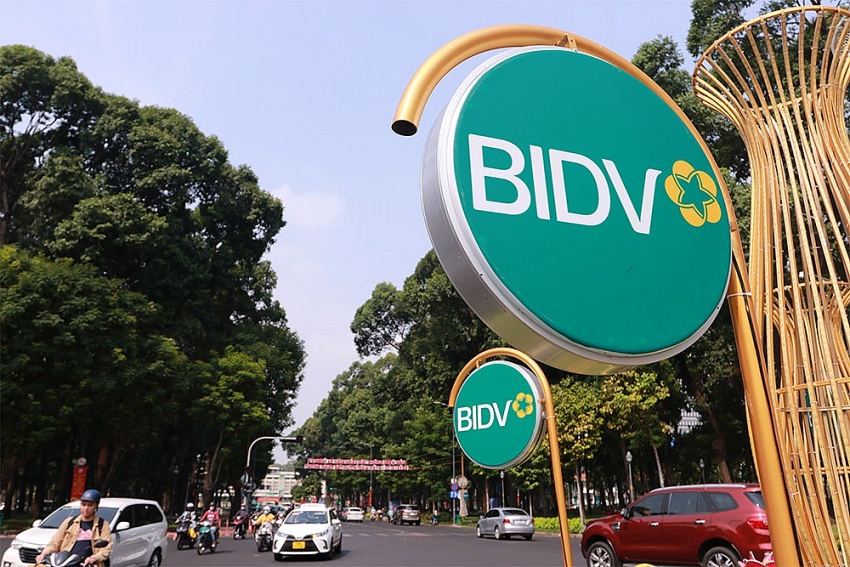Banks eye charter increase
Banks eye charter increase
Vietnam’s banks are to set out ambitious plans to raise charter capital this year.

With AGM season up ahead, Vietcombank plans to issue 6.5 per cent of its charter capital to strategic shareholders, with a projected scale of $1 billion, equivalent to $4 per share. Additionally, it will propose a plan to increase its charter capital by 38.8 per cent through stock dividends.
LPBank anticipates increasing charter capital by over 31 per cent at its 2024 AGM. MSB will seek approval to raise its charter capital by 30 per cent, while Techcombank plans a significant boost in its charter capital by almost half.
Likewise, ACB, VIB, and Nam A Bank have approved plans to increase charter capital. BIDV has meanwhile postponed its equity increase plan, while MBB has completed private placements for both Viettel and State Capital and Investment Corporation.
The segment comprising financial companies, financial leasing firms, and cooperative banks maintained their charter capital at the same level as the end of 2023. Additionally, The People’s Credit Fund witnessed an increase in charter capital, reflecting a 0.98 per cent growth compared to the end of 2023.
Dr. Nguyen Tri Hieu, an economic expert, said that while Vietnamese banks have shown improvement in capital adequacy ratio, they still lag international standards. The average ratio in Vietnam is notably lower compared to regional counterparts, such as Indonesia at 22.6 per cent, the Philippines at 17.2 per cent, Singapore at 17.1 per cent, and Thailand at 19.6 per cent.
“Many banks in Vietnam have yet to fully implement the pillars of Basel II standards, emphasising the necessity of increasing charter capital to enhance financial capacity,” he said.
Banks’ financial reports indicate that the industry-wide bad debt ratio has significantly improved in the fourth quarter of 2023 compared to the previous quarter, although it still low compared to 2020-2022.
Bad debt of 27 listed banks reached 1.9 per cent at the end of 2023, while the total bad debt balance of the entire industry at the end of 2023 increased by 57.6 per cent over the same period and decreased by 7.4 per cent compared to the previous quarter.
Experts largely attribute this decrease in the bad debt ratio to robust credit growth in the final quarter of the year. Specifically, credit growth of the 27 listed banks in Q4/2023 reached 17 per cent over the same period and 7.6 per cent compared to Q3/2023,
While the loan loss reserve (LLR) showed signs of bottoming out in the third quarter of 2023 (reaching 93.8 per cent), it saw a slight increase to 95 per cent by the end of the fourth quarter of 2023. However, this level remains significantly lower than the period from the end of 2020 to the first quarter of 2023 when it was above 100 per cent.
“Although asset quality has shown signs of bottoming out in the third quarter of 2023, the recovery in Q4 will have a major contribution from high credit growth. Therefore, we forecast that bad debt at the end of the first quarter of 2024 may increase slightly in most banks,” said Tran Thi Khanh Hien, research director at MB Securities Company.
Hien predicted that attracting credit through lending rate reductions, amid the current low credit demand, will push commercial banks into a precarious position, lacking sufficient provision buffers for potential bad debts. This scenario is expected to impact joint-stock commercial banks more significantly than state-owned ones.
The discrepancy arises primarily from the lending structures of these two banking groups. State-owned commercial banks heavily cater to large corporate clients and state-owned enterprises, characterised by stronger debt repayment cash flows and credit ratings compared to small enterprises or individual customers.
Furthermore, at the end of 2023, LLR for state-owned and joint-stock commercial banks stood at 188.9 and 61.1 per cent, respectively, indicating a substantial difference.
Additionally, bad debts for these groups are projected to have reached 1.1 and 2.5 per cent, respectively, by the end of 2023. The discrepancy suggests that joint-stock commercial banks will have limited room for absorbing bad debts.
Consequently, Hien forecasted a slight increase in industry-wide bad debts by 10-20 basis points in the first half of 2024 due to low credit growth. However, for the whole of 2024, banks are anticipated to ramp up provisioning and bad debt management efforts.
Moreover, the State Bank of Vietnam may consider extending Circular No.02/2023/TT-NHNN until the end of the year, providing banks with time to address outstanding debts.




























